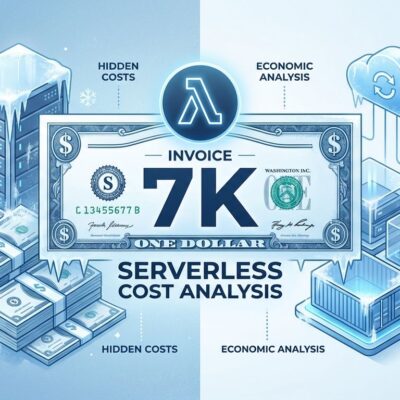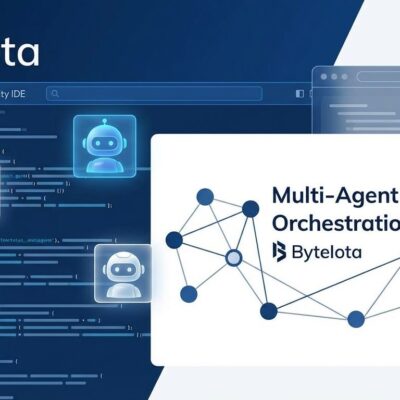
FastAPI has surged to 38% adoption among professional Python developers in 2025, jumping from 29% just one year earlier—a 40% year-over-year growth rate that makes it Python’s fastest-growing web framework, according to the JetBrains/Python Software Foundation Developer Survey of 30,000+ respondents. The framework now surpasses both Django and Flask for API-first development, with PyPI downloads matching Django’s 9 million monthly volume and GitHub stars hitting 91,700+. Enterprise adoption by Uber, Netflix, and Microsoft validates FastAPI’s production readiness, while job postings for FastAPI skills increased 150% in 2024-2025. For Python developers, this isn’t just a framework trend—it’s a career signal.
This shift represents more than developer preference. Moreover, it marks async Python’s transition from experimental to mainstream, driven by workload evolution: microservices replacing monoliths, AI model serving demanding low-latency inference, and real-time APIs requiring high concurrency that Django’s sync architecture wasn’t built to handle.
FastAPI Adoption Hits 38%: Survey Data Reveals Framework Shift
The numbers tell a clear story. FastAPI jumped 9 percentage points in adoption (29% to 38%) in a single year, according to the 2025 State of Python survey published by JetBrains and the Python Software Foundation in August. Furthermore, with 30,000+ developer respondents, this remains the most comprehensive Python ecosystem survey available.
PyPI download statistics reinforce the trend: FastAPI now matches Django at 9 million monthly downloads, while GitHub stars surged from 15,000 in 2020 to 91,700+ in November 2025—a 6x increase in five years. Meanwhile, the job market reflects demand: FastAPI postings increased 150% year-over-year, particularly in fintech and AI companies where high-performance async APIs are non-negotiable.
Enterprise adoption provides the final validation. By mid-2025, over 50% of Fortune 500 companies were using FastAPI in production. Consequently, when conservative organizations adopt a framework at this scale, it’s no longer experimental—it’s infrastructure.
Async-First Design: Why FastAPI Outperforms Django 2-3x
FastAPI’s performance advantage isn’t marketing hype—it’s measurable. Independent benchmarks show FastAPI handles 2,847 requests per second for simple GET endpoints, compared to Django’s 1,205 RPS and Flask’s 1,923 RPS. For complex POST operations with validation, the gap widens: FastAPI processes 1,634 RPS while Django manages just 743 RPS.
However, raw speed misses the real story. The advantage comes from architectural fit. Modern workloads—microservices calling multiple databases, AI inference pipelines aggregating external APIs, real-time dashboards polling services—are I/O-bound, not CPU-bound. Consequently, Django’s synchronous WSGI architecture blocks on each I/O operation. In contrast, FastAPI’s async ASGI architecture handles concurrent I/O efficiently through Python’s async/await syntax, multiplying effective throughput without additional hardware.
Load testing under 1,000 concurrent users reveals the practical impact: FastAPI maintains stable response times while Django shows latency spikes. Therefore, when your API serves mobile clients across continents or orchestrates microservices, that stability difference compounds into better user experience and lower infrastructure costs.
Uber, Netflix, Microsoft: Enterprise Adoption Validates Production Readiness
Enterprise adoption removes the “is it production-ready?” uncertainty that often blocks framework decisions. Uber uses FastAPI to serve Ludwig ML library predictions at thousands of requests per second. Netflix built their Dispatch crisis management orchestration framework on FastAPI, leveraging async architecture for data streaming at massive scale. Moreover, Microsoft is migrating all machine learning services to FastAPI, with integrations into core Windows and Office products—a Microsoft engineer stated the team is “planning to use it for all of our machine learning services.”
This isn’t vanity adoption. These companies chose FastAPI for the same reason: async architecture matches their workload requirements. ML model serving demands low-latency inference with high concurrency. Crisis management systems need reliable data aggregation under load. Additionally, Microsoft’s ML integrations require responsive APIs handling unpredictable traffic spikes.
For developers at risk-averse organizations, these production stories provide critical validation. Therefore, when Microsoft puts FastAPI into Windows, the “too new to trust” argument evaporates. Corporate decision-makers recognize these names—and that recognition accelerates adoption cycles.
Auto Docs, Type Safety, Pydantic: Developer Experience That Sticks
FastAPI’s developer experience advantages compound over time. The framework automatically generates interactive Swagger UI and ReDoc documentation from your code—with zero configuration. Furthermore, type hints drive validation, serialization, and docs simultaneously, eliminating the repetitive boilerplate that plagues Django REST Framework.
Consider this minimal FastAPI endpoint:
from fastapi import FastAPI
from pydantic import BaseModel
app = FastAPI()
class Item(BaseModel):
name: str
price: float
@app.post("/items/")
async def create_item(item: Item):
# Auto-validated, auto-documented, async-ready
await database.save(item)
return {"status": "created", "item": item}
Pydantic validates incoming data against the Item model automatically. FastAPI generates API documentation showing request/response schemas. Additionally, type hints provide editor autocomplete and catch bugs at development time. Async handling manages concurrent database operations efficiently. All in under 15 lines of code.
Developers notice. One Hacker News commenter put it bluntly: “Using Pydantic for serialization is way nicer than Django REST Framework serializers—DRF feels slow and antiquated after using Pydantic.” This isn’t framework evangelism; it’s developers experiencing friction reduction. However, auto-generated docs save hours weekly. Type safety prevents production bugs. Better tooling means faster development.
When to Choose FastAPI vs Django: Decision Criteria for 2025
The “FastAPI vs Django” debate creates a false dichotomy. These frameworks solve different problems, and smart teams use both.
Choose FastAPI for API-first projects: microservices, machine learning model serving, real-time applications with WebSockets, and any high-concurrency workload where async I/O provides measurable advantages. The framework’s lightweight design and async-native architecture make it ideal for services that do one thing exceptionally well.
Choose Django for full-stack web applications requiring admin panels, server-side rendering, and rapid prototyping with tight deadlines. Django’s batteries-included philosophy—built-in ORM, authentication, admin interface, templating—accelerates traditional CRUD application development. For monolithic web apps, Django’s ecosystem remains unmatched.
The hybrid approach is increasingly common: Django handles the web application and admin interface, while FastAPI microservices power high-performance API endpoints. This pattern leverages each framework’s strengths without forcing an either/or choice.
FastAPI didn’t replace Django—it filled a gap Django wasn’t designed to address. Async API-first architecture requires different design patterns than server-rendered web applications. Consequently, developers who understand this distinction make better framework choices.
Key Takeaways
- FastAPI’s 38% adoption rate and 40% year-over-year growth make it Python’s fastest-growing web framework, backed by authoritative JetBrains/PSF survey data
- Async architecture delivers 2-3x performance advantages for I/O-bound workloads—microservices, AI inference, real-time APIs benefit measurably
- Enterprise production use by Uber, Netflix, and Microsoft removes adoption risk, validating FastAPI for conservative organizations
- Developer experience advantages (auto docs, Pydantic validation, type safety) compound over time, reducing development friction and production bugs
- Framework choice depends on workload type: FastAPI for async API-first projects, Django for full-stack web apps—hybrid architectures leverage both
For Python developers planning 2025 skill investments, FastAPI’s job market demand (150% growth), enterprise validation, and alignment with modern architecture patterns make it a strategic learning priority. The async Python ecosystem has matured past experimentation into production infrastructure.












